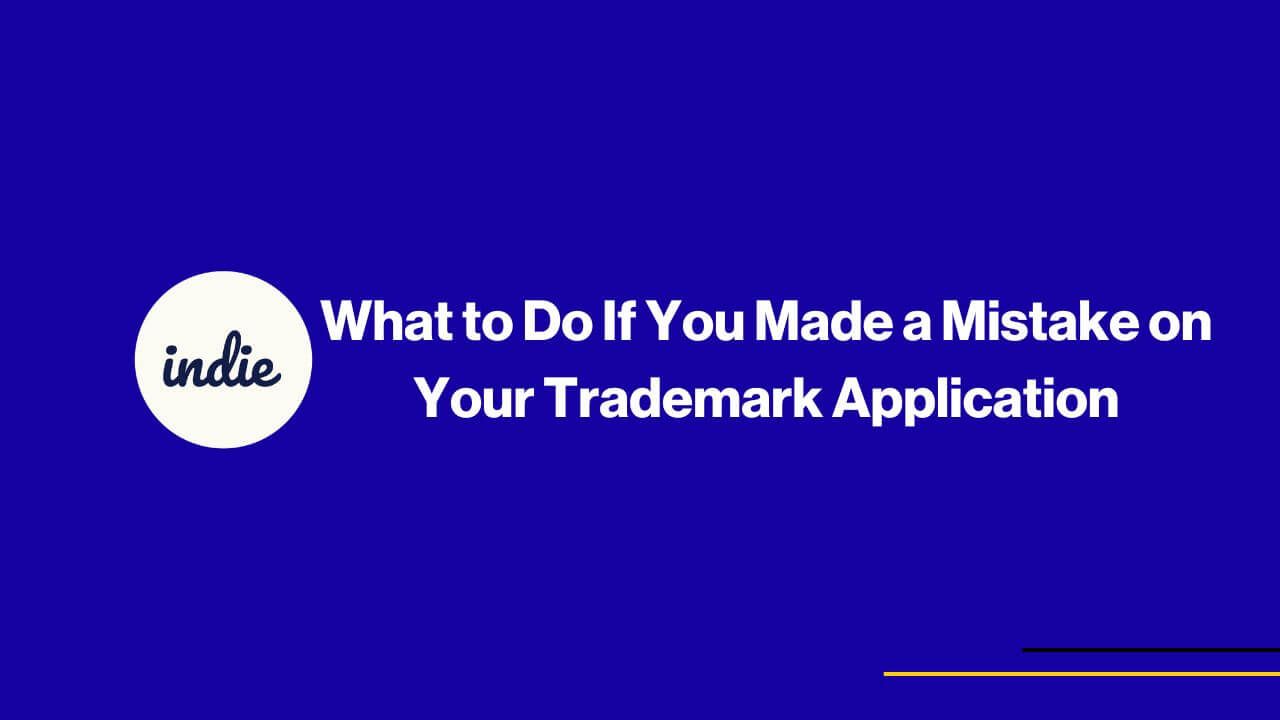Table of Contents
- Introduction
- Common Mistakes in Trademark Applications
- Steps to Correct a Mistake on Your Trademark Application
- Preventing Mistakes in the Future
- How a Trademark Attorney Can Help
Filing a trademark application is an important step in protecting your brand, but mistakes during the process can lead to delays, additional costs, or even rejection. If you’ve realized there’s an error in your trademark application, don’t panic—you’re not alone, and there are steps you can take to fix it.
In this guide, we’ll cover the most common trademark application mistakes, how to correct them, and why working with a trademark attorney can save you time, money, and stress.
Common Mistakes in Trademark Applications
Mistakes can happen at any stage of the application process. Here are the most frequent errors we encounter:
- Incorrect Owner Information
If the wrong entity (e.g., an individual instead of a business or vice versa) is listed as the trademark owner, it can create significant issues with enforceability later on. - Misclassification of Goods or Services
Choosing the wrong trademark class for your goods or services can result in delays or a refusal from the USPTO. - Inadequate Specimens
Submitting a specimen that doesn’t meet USPTO standards, such as a mock-up or incomplete usage, is a common cause of rejection. - Misspelled or Incorrect Trademark Details
Errors in the trademark name, logo, or description can compromise your application’s validity. - Failure to Claim Proper Ownership in Joint Ventures
In cases where multiple parties share ownership, failing to properly document ownership can lead to disputes or application rejection. - Failure to Respond to Office Actions
Missing deadlines or improperly addressing issues raised by the USPTO can result in your application being abandoned.
Steps to Correct a Mistake on Your Trademark Application
If you’ve identified a mistake, here’s what you can do to address it:
1. Act Quickly
Timing is critical. Once the USPTO processes your application, it becomes part of the public record, and fixing mistakes can be more complex. If you catch the mistake early, you may be able to amend your application before the examining attorney reviews it.
- Solution: File a Voluntary Amendment through the USPTO’s Trademark Electronic Application System (TEAS). This can correct minor errors, such as typographical mistakes or submitting additional or substitute specimens, before the application is approved.
2. Respond to Office Actions
If the USPTO issues an office action highlighting an issue with your application, you’ll have six months to respond. Common issues include:
- Likelihood of confusion with an existing mark.
- Incomplete or unclear descriptions of goods/services.
- Inadequate specimens showing use in commerce.
- Solution: Work with a trademark attorney to craft a comprehensive response. Attorneys can address substantive and procedural issues effectively, giving your application the best chance of approval.
3. Correct Ownership Errors
If you mistakenly listed the wrong entity as the owner of the trademark, the USPTO generally won’t allow you to change ownership during the application process.
- Solution: You may need to refile the application under the correct owner. In some cases, a legal assignment of the trademark application to the correct party may resolve the issue.
4. File a Post-Publication Amendment
If your application has been published for opposition but contains a mistake, you can file a post-publication amendment. The USPTO may allow changes that don’t materially alter the trademark or its goods/services.
- Solution: Use TEAS to request the amendment and provide a clear explanation of why the change is necessary.
5. Petition to Revive an Abandoned Application
If your application was abandoned due to a missed deadline, you may be able to petition the USPTO to revive it.
- Solution: File a Petition to Revive within two months of the abandonment notice. You must show that the error was unintentional and pay the associated fees.
Preventing Mistakes in the Future
Mistakes on trademark applications can be costly and time-consuming to fix. Here’s how to prevent them in the first place:
- Conduct Thorough Research: Ensure your desired mark isn’t already in use or too similar to existing trademarks.
- Work with a Trademark Attorney: Attorneys provide expertise in everything from trademark searches to drafting applications, minimizing errors.
- Double-Check Application Details: Carefully review owner information, descriptions of goods/services, and specimens before submitting.
- Respond Promptly to Office Actions and Notices: Timely and thorough responses are critical to avoiding abandonment.
How a Trademark Attorney Can Help
Navigating the USPTO’s rules and procedures can be overwhelming, especially if you’re unfamiliar with trademark law. Trademark attorneys specialize in identifying and correcting errors, responding to office actions, and ensuring that your application is on solid legal footing.
With an attorney’s guidance, you can avoid the most common pitfalls, increase your chances of approval, and save time in the process. At Sleight Law, we’re dedicated to helping entrepreneurs and businesses protect their brands every step of the way. Whether you need assistance with fixing application mistakes or want to ensure a smooth filing process from the start, our team is here to support you.
Final Thoughts: Don’t Let a Mistake Jeopardize Your Trademark
Mistakes on trademark applications are more common than you might think, but they don’t have to derail your plans. By acting quickly, understanding your options, and seeking professional guidance, you can correct errors and move forward with confidence.
Your trademark is a critical part of your brand’s identity—don’t let avoidable mistakes stand in the way of securing it.

